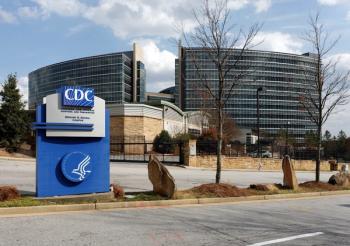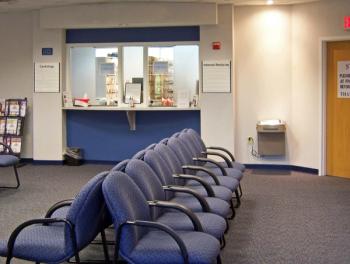
Study: Bronchial thermoplasty can aid asthma hospitalizations
A new five-year study indicates that bronchial thermoplasty shows promise in keeping patients with asthma exacerbations out of the hospital.
For some asthma patients, even multiple medications aren’t enough to keep them from having exacerbations requiring hospitalizations or emergency department visits.
But a new treatment that uses heat to remove the excess smooth muscle that contributes to severe asthma attacks is showing promise for keeping this patient population out of the hospital, according to results from a new
The study found that patients had significantly reduced exacerbations following the initial treatment. Specifically, patients who received BT experienced a 32% decrease in severe asthma attacks, an 84% reduction in emergency department (ED) visits for asthma-related problems, and 66% fewer missed days from school or work.
“From the primary care perspective, [BT] should be considered for someone who is an asthmatic and they are requiring prednisone several times a year or who are developing complications from long-term steroid use,” D. Kyle Hogarth, MD, a pulmonologist at the
Treatment vs. hospitalization
Chronic prednisone use is associated with a host of problems, including weight gain and development of diabetes mellitus, and Hogarth says BT is a great alternative therapy for those patients. The treatment also goes a long way toward improving quality of life and reducing healthcare costs, he says. Although BT is not a cheap treatment option, it may very well be more cost-effective for patients who require frequent hospitalization. Hogarth gives an example of one patient who spent 33 days in the hospital in the year before receiving BT, and was hospitalized only once after.
Related:
Roughly 26 million people in the U.S. suffer from asthma, and exacerbations of the condition result in more than 456,000 hospitalizations, 14 million visits to their physicians, and 2 million emergency department visits annually, according to the
One of the hallmarks of asthma is also increased smooth muscle mass, according to the study, and there is evidence that the smooth muscle may also play a direct role in secreting cytokines/chemokines and modulating the migration of cells that increase the inflammatory response present during an asthma exacerbation.
Patients suffering from asthma routinely require monitoring and management with a variety of medications including corticosteroids and bronchodilators, or rescue medications including albuterol and ipratropium. In some cases-involving 5% to 10% of asthma sufferers-rescue inhalers must be used frequently to open constricted airways, or their medications are not doing enough to manage their asthma symptoms, leading to increased exacerbations and possible hospitalizations.
In these cases, BT has been shown to be effective in stemming exacerbations in 80% of the patients treated. The minimally invasive outpatient treatment is performed by a pulmonary specialist certified to perform BT, says Hogarth.
BT and asthma
BT was first tested in dogs, and approved by the U.S. Food and Drug Administration (FDA) in 2010 for patients whose asthma exacerbations proved uncontrolled by inhaled corticosteroids and long-acting beta agonists (LABAs), according to the study.
Patients receiving BT are sedated as a bronchoscope is inserted through the nose or mouth. A catheter is advanced into the patient’s airway, and the tip is heated to 149 degrees Fahrenheit. The heat removes excess smooth muscle from the airways, widening passages to reduce the frequency of asthma attacks. BT takes between 30 and 50 minutes to perform, and is done once every three weeks for a total of three treatments over nine weeks. The first treatment is focused on the right lower lobe, the second on the left lower lobe, and the third on the right and left upper lobes. The middle lobe is left untreated due to the potential for adverse effects, according to the report.
Related:
Since BT is still a relatively new treatment, efficacy data is not available beyond five years, but Hogarth says he anticipates it to be a “one and done” procedure.
“I think it will essentially be long-term,” he says.
Not everyone responds to BT, Hogarth cautions, although researchers aren’t certain why. Still, Hogarth says, the treatment is safe, and those who receive BT but find no relief from it are not harmed in anyway.
Newsletter
Stay informed and empowered with Medical Economics enewsletter, delivering expert insights, financial strategies, practice management tips and technology trends — tailored for today’s physicians.















